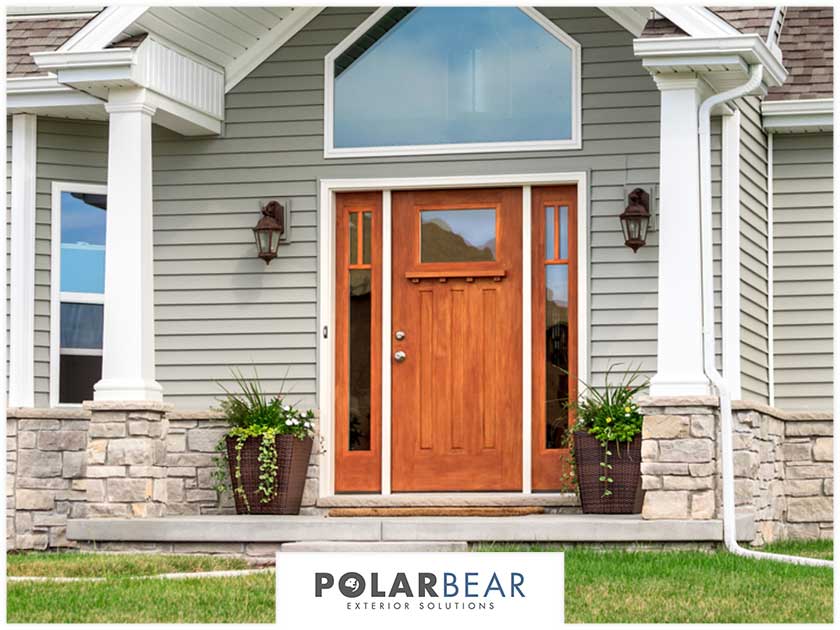New entry doors can help improve your home’s appearance, protect against the elements and provide energy efficiency. The right entry door does so much more than simply serve as a way to enter and exit your home.

Getting a new one requires careful planning, and will certainly come with an array of considerations. To help you find the best style that will complement the overall architectural look of your property, professional door and roofing contractor, Polar Bear Exterior Solutions, shares some key questions to ask before getting a new entry door.
1. Which Type of Door Should You Use?
Whether you’re picking an entry door or new patio doors, there are three things you need to keep in mind: style, energy efficiency and security. It is also necessary to consider the functionality of your home and make sure that your new door does not allow cool air to escape. There are several types of door to choose from:Single doors: As the name suggests, single doors are formed of just one panel.
Double doors: Two single doors set into the same frame. French doors are a variety of double doors.
Bi-fold doors: Consist of several panels that join together in a concertina and run along a guide track. This design allows for the creation of very large room-dividing doors, and small ones which are used for storage spaces where there’s no room for a traditional single door to swing outward.
Sliding doors: Made from panels set into a long track. They slide behind one another to create an opening.
2. What Material Should You Use?
Your front door is one of the first things you and your guests see when they arrive at your home. One of the most important things you should ask yourself is what type of door material you should choose. When it comes to front doors, a window contractor suggests three kinds of materials:
Wood: Wood doors are particularly popular for historic homes, and they are available in custom finishes so you can create a unique door that matches your home’s architectural aesthetic. They do require regular maintenance and can fade or warp over time if they receive several hours of direct sunlight every day.
Steel: It’s hard to beat the strength of steel when it comes to entry doors. Plus, they can be painted to match other exterior elements and are extremely energy efficient.
Fiberglass: For an energy-efficient, low-maintenance, and cost-effective door, fiberglass is a great choice. Many companies even offer durable fiberglass doors with the appearance of real wood.
3. Will the Door Swing Inward or Outward?
Almost all exterior doors are designed to swing towards the interior space. Most entry doors tend to swing inwards for security purposes. However, when you’re trying to decide if your door should swing outward or inward, security isn’t the only factor you need to keep in mind. According to experts, you should pay attention to your local climate as well as how it can affect your door. This is mainly due to two reasons:
Inward swing doors have hinges on the inside, increasing aesthetic appeal from the outside. This feature is particularly useful for people residing in snowy climates since doors that swing inward are not difficult to open when snow piles up in front.
Outward swing doors are more secure, airtight and durable than inswing style doors. If you live in an area that sees tropical storms, use outswing doors as they’re less likely to be blown in by high winds.
4. Do My New Doors Come with Warranties?
In order to protect your investment, you want to make sure that your new doors are at least covered by a manufacturer warranty. While most door manufacturers offer lifetime or limited lifetime warranties on their products, also ask your contractor if they offer a labor warranty.
Don’t know which door is best for your home? Ask Polar Bear Exterior Solutions. We are a leading door replacement and window contractor that offers a variety of beautiful, secure and energy-efficient home improvement products. Call us at (425) 290-5579 or submit our contact form to schedule a free in-home consultation and estimate. We serve clients in the Greater Seattle area.

